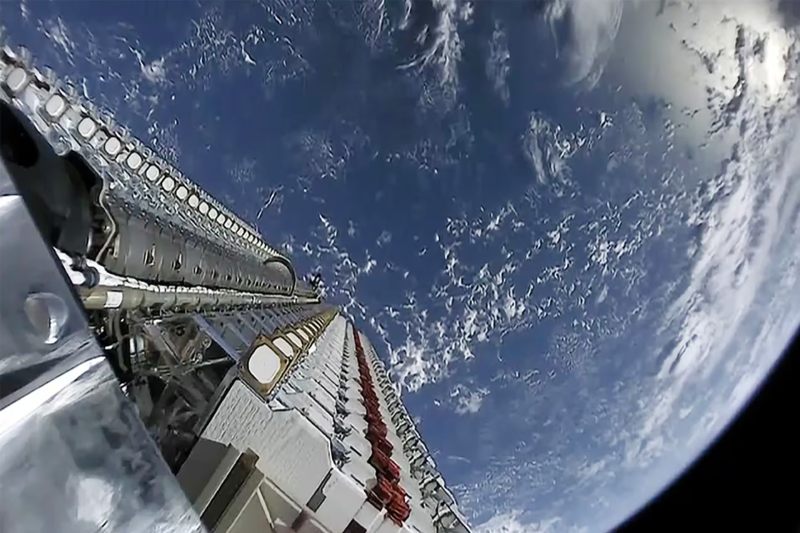SpaceX to Remove 100 Starlink Satellites from Orbit Owing to Possible Problem

SpaceX intends to deorbit 100 first-generation Starlink satellites as a precaution, citing a probable defect that would eventually lead to the satellites’ total failure.
Consequently, the satellites will move in Earth’s direction and eventually break apart in the planet’s atmosphere. “Starlink satellites are also fully demisable by design, meaning that the risk to those on the ground, in the air, or at sea from a deorbiting satellite is effectively zero as the satellites burn up during reentry,” SpaceX stated on Monday.
Customers of Starlink won’t be impacted by the deorbiting, according to SpaceX. Despite the fact that the network is losing 100 satellites, there are still more than 5,400 operational satellites in total.
The statement was released by the business emphasizing SpaceX’s “commitment to space sustainability.” The satellite network’s expansion over time has drawn attention due to possible orbital risks to other space programs or even the possibility of hazardous debris falling to Earth.
But according to SpaceX, the Starlink network was created to keep itself from endangering space travel. To enable movement within Earth’s orbit, every satellite is equipped with ion thrusters and a mechanism for “autonomous collision avoidance.” Even if engine mobility is lost, atmospheric drag will also drive all Starlink satellites to deorbit and burn up in the atmosphere within five years.
Starlink didn’t go into detail about the early satellites’ problem. It simply stated that “a common issue in this small population of satellites that could increase the probability of failure in the future” had been found by the Starlink team.
SpaceX chose to deorbit the 100 satellites while they could still be used for operations rather than take the chance of losing the ability to do so in the event of a total failure.
“The satellites will follow a safe, circular, and controlled lowering operation that should take approximately six months for most of the vehicles,” the company added. “All satellites will maintain maneuverability and collision avoidance capabilities during the descent.”
Forty-six satellites have already been deorbited, says SpaceX. According to the corporation, 17 of those are presently immobile, quietly deteriorating, and well-tracked to reduce the chance of colliding with other active satellites. “The remaining 95% of the satellites, for which the Starlink team began a controlled descent, have now left their orbit.”
Some of these previously deorbited Starlink satellites were retired because of technical faults or hardware problems, according to documents made by SpaceX.